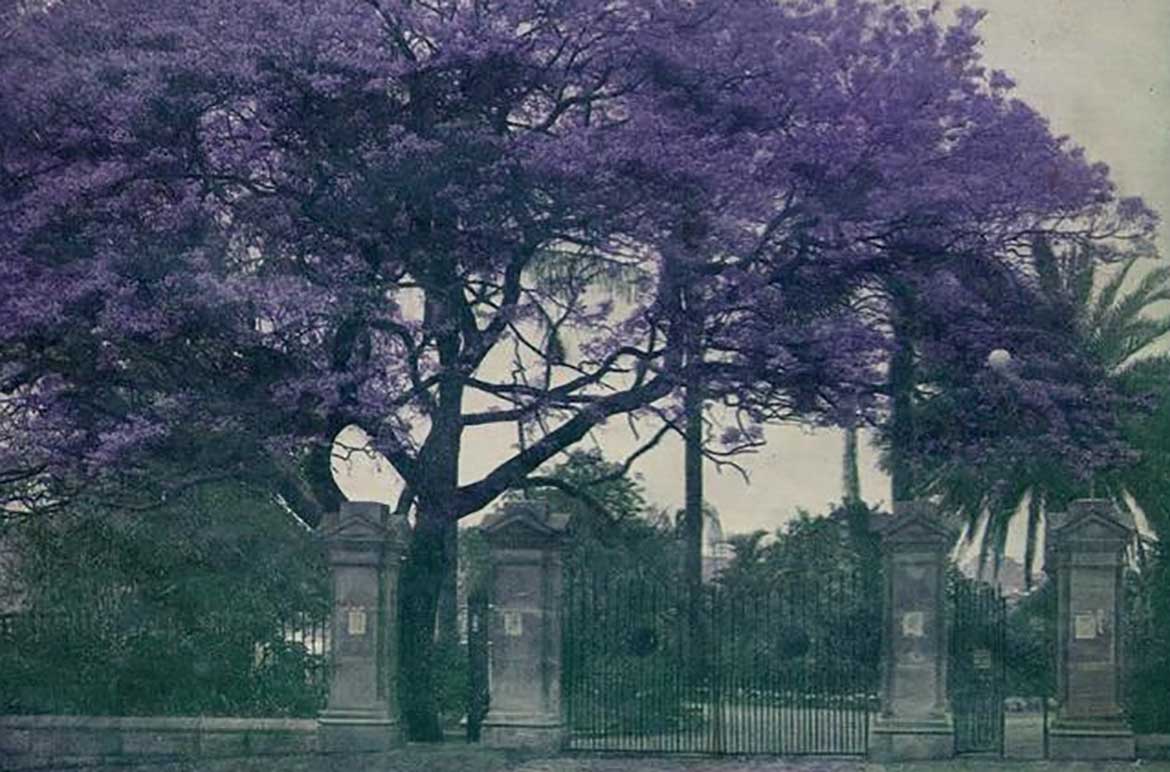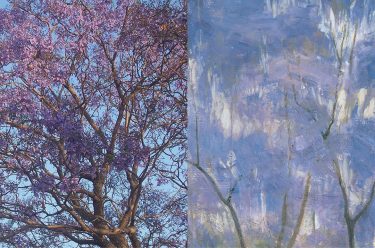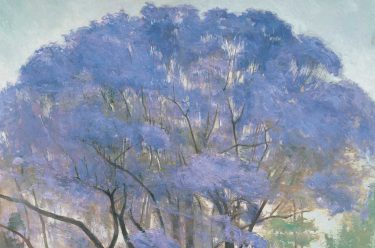Paintings of jacarandas in bloom have become a popular and appealing subject for Brisbane artists, the most famous image of the jacaranda is R. (Richard) Godfrey Rivers’s painting Under the jacaranda, which has achieved enormous popularity since it was painted and acquired by the Gallery in 1903. The image depicts Rivers and his wife Selina sitting in the shade of a large jacaranda tree, at that time a landmark in Brisbane’s Botanic Gardens.
From October, streets and gardens are awash with the magnificent purple-blue blooms of jacarandas creating a colourful carpet of fallen flowers, so while Brisbane is in glorious bloom, we’ve rounded up our Under the jacaranda merchandise from the QAGOMA Store so you can continue to bask in springtime all year round.
RELATED: UNDER THE JACARANDA
DELVE DEEPER: KNOW BRISBANE through the QAGOMA Collection
READ MORE: QUEENSLAND STORIES

Left to right / 1000 piece Jigsaw Puzzle / Small Postcard / Magnet / Tote Bag / Lens Cleaning Cloth / Large Postcard / Greeting Card Box Set containing 12 blank cards (6 cards of 2 images) and envelopes / Tea Towel (not illustrated) / Available in store with selected products online.
The painting

The tree
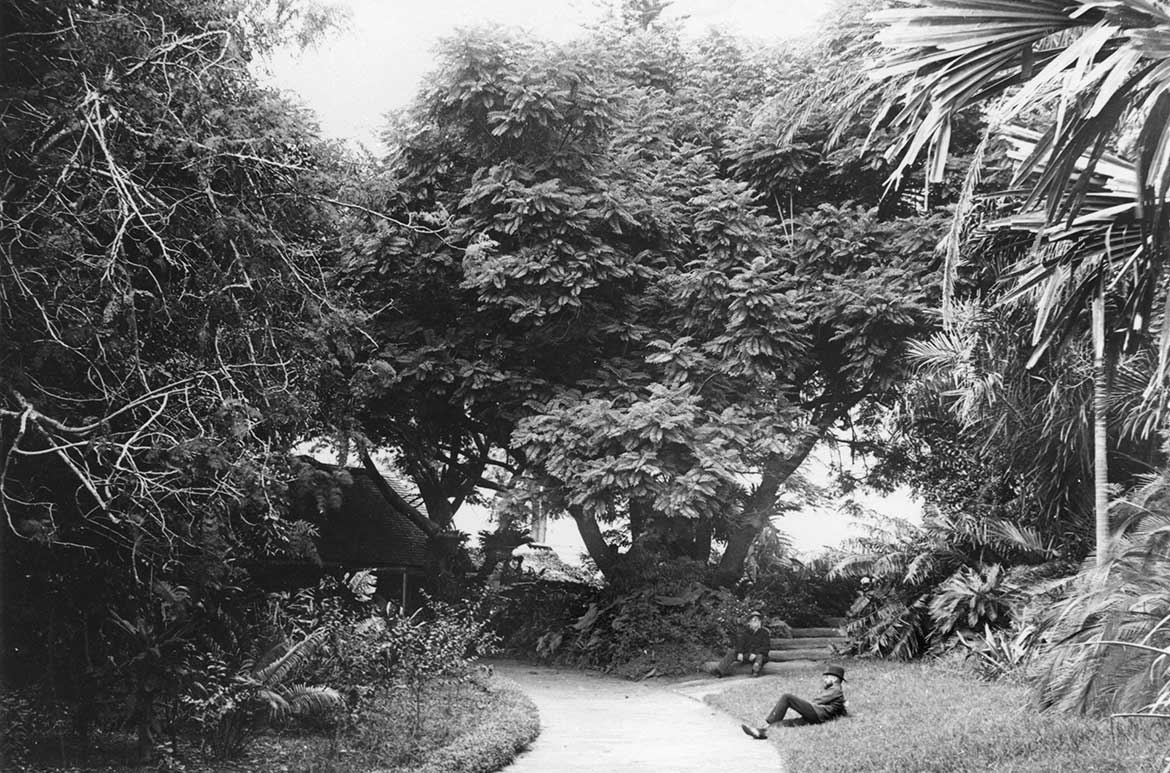
In the 1850s Queensland was sending wheat and grain to South America and on their return ships would unload at the Kangaroo Point cliffs wharfs and the first Superintendent of the Brisbane Botanic Gardens, Walter Hill, would row across the river and exchange seeds and plants. One of these visiting sea captains from South America gave Hill a jacaranda seed, which he planted at the rear of the Botanic Gardens in 1864, this is acknowledged as the first jacaranda tree grown in Australia.
Overlooking the Brisbane Botanic Gardens


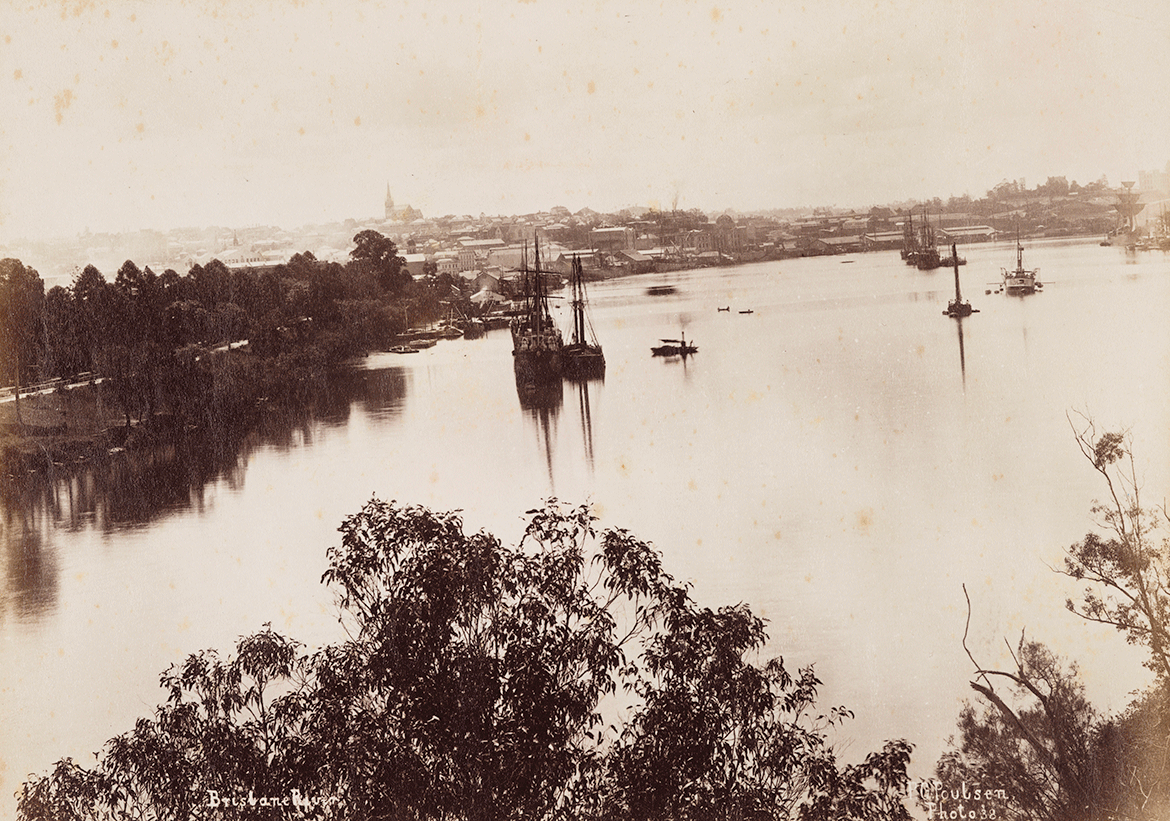

The Brisbane Botanic Gardens, just established some nine years earlier in 1855, received plants and seeds from around the world and from other parts of Australia to test what could be cultivated in Queensland and Hill provided a regular report on the success and failures of these plantings. In 1870 he reported on the plantings, including Jacaranda Mimosifolia, the sub-tropical tree native to south-central South America. Of the trees, Hill noted, ‘All these are very beautiful when in blossom, and some already wear their honours, and all give goodly promise for the future’.1
Little did Hill realise that the species would be established as a Brisbane icon, with jacaranda trees now growing in most suburbs, many of these older trees grown from the seed of this first jacaranda.
Endnote
1 Maree Stanley ‘Jacaranda’ Queensland Historical Atlas http://www.qhatlas.com.au/jacaranda
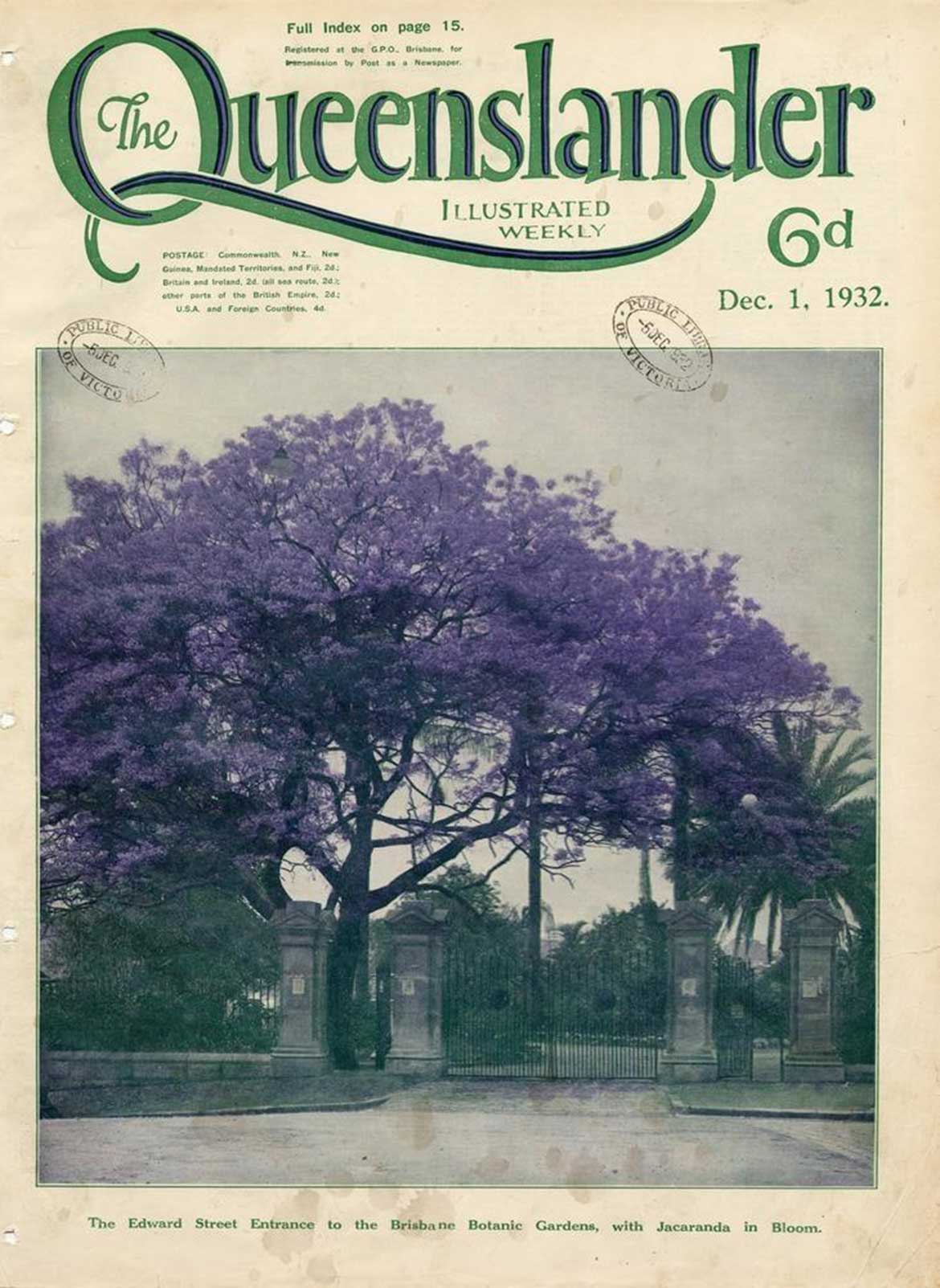
Know Brisbane through the QAGOMA Collection / Delve into our Queensland Stories / Read more about Australian Art / Subscribe to QAGOMA YouTube to go behind-the-scenes
#QAGOMA
